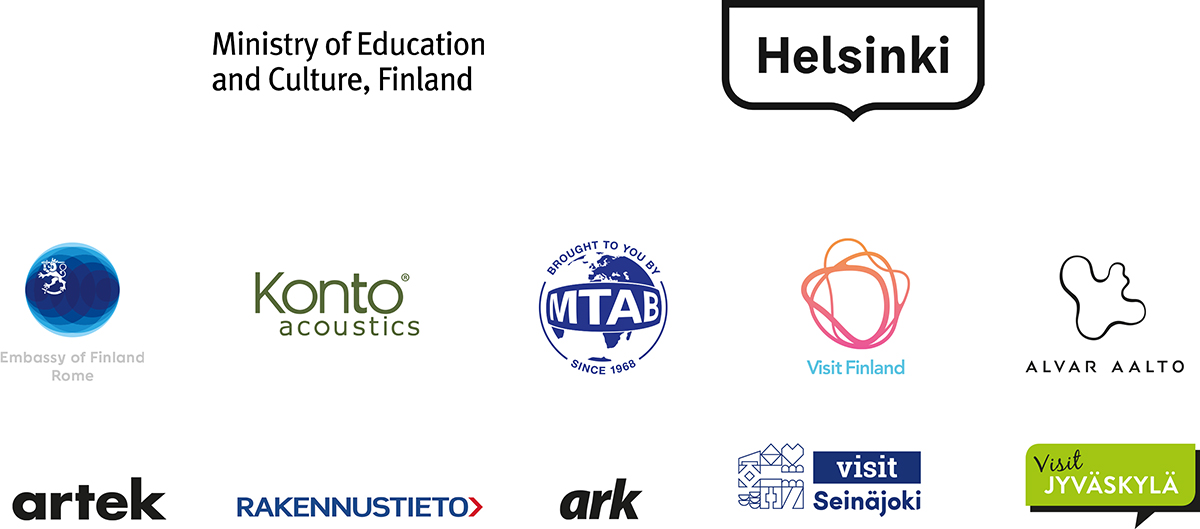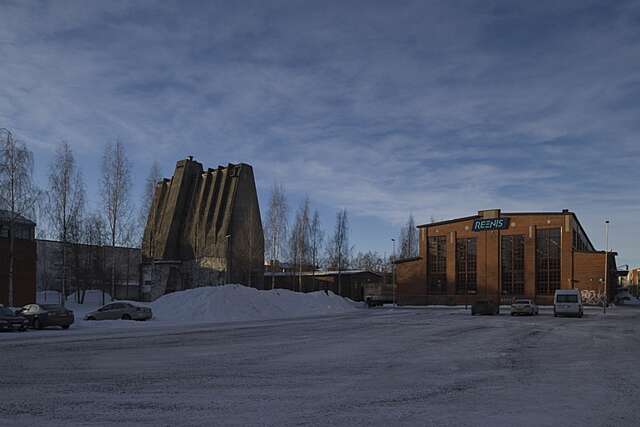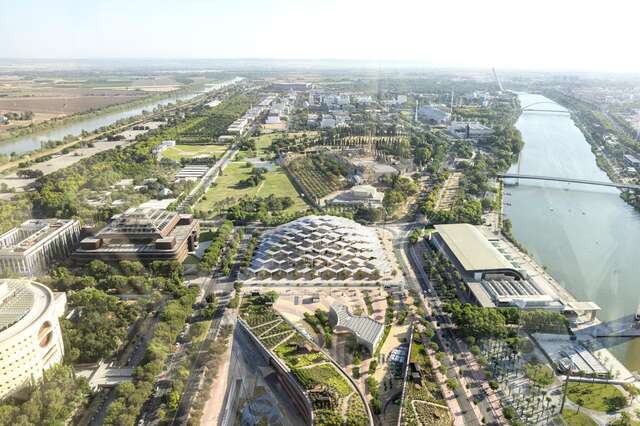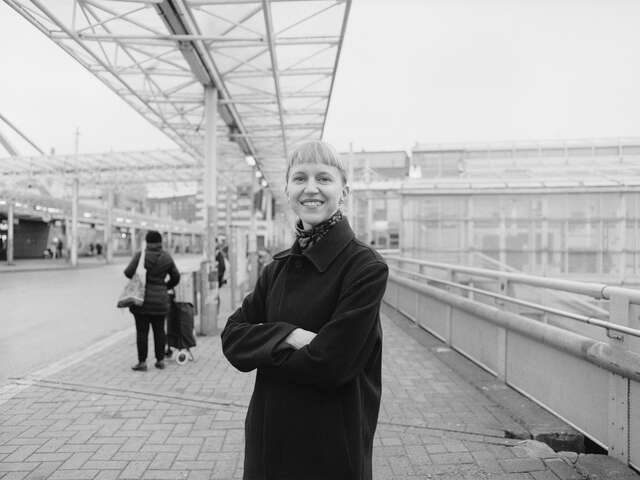Finland’s exhibition at the Venice Biennale is a tribute to public libraries and library architects.
The vernissage of the 16th International Architecture Exhibition of La Biennale di Venezia takes place on 24–25 May. Finland’s exhibition, titled Mind-Building, explores the development of Finnish library architecture throughout times, leading up to the opening of Oodi Helsinki Central Library in December 2018.Mind-Building tells the story of Finnish library architecture by presenting seventeen library buildings of different times through a thematic approach. The exhibition highlights different qualities specific to each building.“Libraries are the cornerstones of a civilised, forward-looking society. In Finland, libraries have introduced readers to our literature, spread information and knowledge, attracted young people away from the streets, taught us to use the Internet, and facilitated and equipped us to be active and autonomous citizens. Our architects have given the library its visual form. Through the art of architecture, they have participated in nourishing the social viability that the library radiates upon its users. Our exhibition is a tribute to library architecture. Furthermore, it is a reminder of the power of good architecture, exceeding time and place,” explains curator
Anni Vartola of the ideas behind the exhibition.Rikhardinkatu Library in Helsinki from 1881, designed by architect
Theodor Höijer as Finland’s first public library building, begins the story together with Kallio Library from 1914. The latter, designed by Helsinki city architect
Karl Hård af Segerstad, was recently reopened after renovation and renewal works conducted by Valvomo Architects.Although built at different eras, Viipuri Library in Vyborg, now Russia (
Alvar Aalto, 1935) and Töölö Library in Helsinki (
Aarne Ervi, 1970) both represent white modernism and confidence in the future. Viipuri Library was the first Finnish library to have a dedicated children’s section, and Töölö Library led the way with its music section. Both libraries have been restored in the 2010s by architect
Tapani Mustonen.
“Libraries are the cornerstones of a civilised, forward-looking society.”
Tampere Main Library Metso (
Raili and
Reima Pietilä, 1983), Kuhmo Town Library (
Jyrki Tasa, 1988), Joensuu City Library (
Tuomo Siitonen, 1992), Raisio Library and Auditorium (
Hannu Tikka, 1995) and Lohja Main Library (
Ilmari Lahdelma, 2006) all tell about the architecture of their time and lead the story to the world after modernism. Vallila Library in Helsinki (
Juha Leiviskä, 1991) is a prime example of a small branch library where architecture ennobles the everyday activities.A new leaf in the story of library architecture was turned when Turku Main Library (JKMM Architects, 2007) was built as an annex to the old library building. Chief architect
Asmo Jaaksi and interior architect
Päivi Meuronen of JKMM were also responsible for Seinäjoki Main Library Apila (2012), and a third episode in the strong and joyful series of library spaces designed by JKMM was played at Harald Herlin Learning Centre, which was completed in 2016 in the basement of the former Helsinki University of Technology Main Library by Alvar Aalto (1970). The chief architects of the library’s restoration and transformation work were
Teemu Tuomi and
Tuomo Remes of Architects NRT.Maunula Community Centre (K2S Architects, 2017) brings the story to present time and gives an example of how building a library and a community centre can have an active role in bringing the local community together. The design process acted as a pilot of participatory design where the architects, clients, local residents and future users all were in interaction throughout the process.A view into the library of the future is presented by Oodi Helsinki Central Library (ALA Architects) due to open to the public in December 2018. In addition to peaceful immersion into books, the new central library will be a place for active citizenship, encounters and activities. Oodi will be a non-commercial public space open for everyone, proudly taking its place in the node of parliamentary and cultural institutions.
“Oodi will be a non-commercial public space open for everyone, proudly taking its place in the node of parliamentary and cultural institutions.”
The exhibition also presents three commissioned video and sound works: a video telling about the Helsinki University Main Library Kaisa (Anttinen Oiva Architects, 2012) by
Antti Auvinen and
Marja Rautaharju and about Sello Library in Espoo (Helin & Co Architects, 2003) by
Helmi Kajaste as well as a sound piece by
Martti Kalliala and
DJ Hvad. In addition, library objects from furniture to souvenirs are on display.A core part of the exhibition at the Alvar Aalto Pavilion are library functions. In the buzz of the biennale, visitors may come to the pavilion to quietly read a book from a selection of publications. While charging their minds they can charge their mobile devices as well. During the opening week and a theme week in the autumn, Helsinki City Library librarians will be present to tell about the versatile activities in libraries. On 21 November, in conjunction with Mind-Building, a library architecture seminar is organised as part of the official programme “Meetings on Architecture” curated by the biennale curator duo
Shelley McNamara and
Yvonne Farrell.Archinfo Finland is for the first time in charge of Finland’s representation at the Biennale. The commissioner of Mind-Building is
Hanna Harris, director of Archinfo Finland. The exhibition design is by
Tuomas Siitonen and graphic design by
Johannes Nieminen.The main supporter of Mind-Building is the Ministry of Education and Culture of Finland. The main partner is the City of Helsinki. Additional supporters are the Embassy of Finland in Rome, Visit Finland, Visit Jyväskylä, Visit Seinäjoki, Artek, Konto Acoustics, MTAB Finland, The Building Information Foundation RTS, Arkkitehti – Finnish Architectural Review, Alvar Aalto Foundation and Helsinki City Library.
Follow Mind-Building on Twitter
@VeniceArchFIN
#MindBuilding
#BiennaleArchitettura2018
La Biennale di Venezia 2018
16th International Architecture Exhibition ‘Freespace’
Open to public from 26 May to 25 November
Preview days on 24–25 May
Partners and supporters




